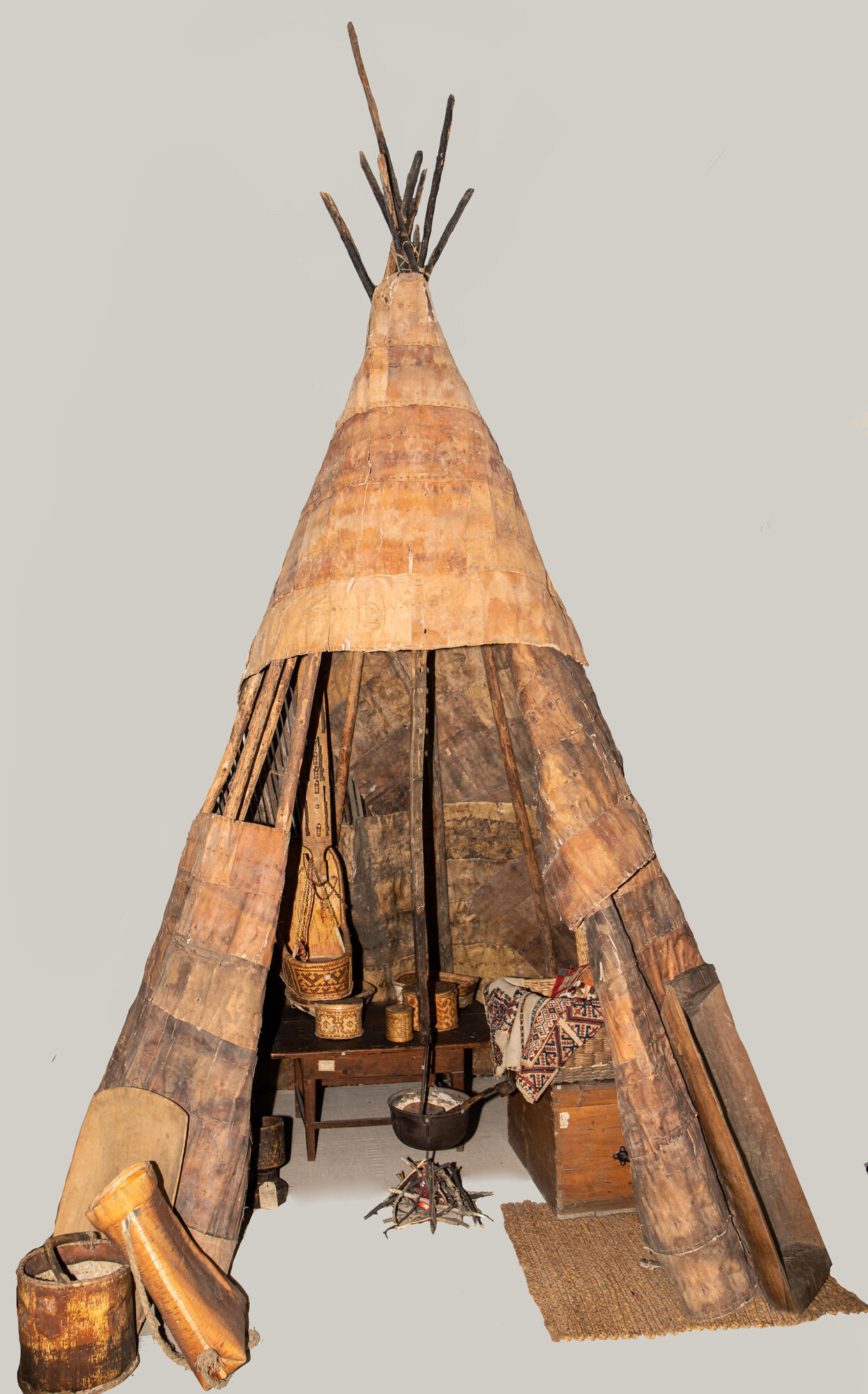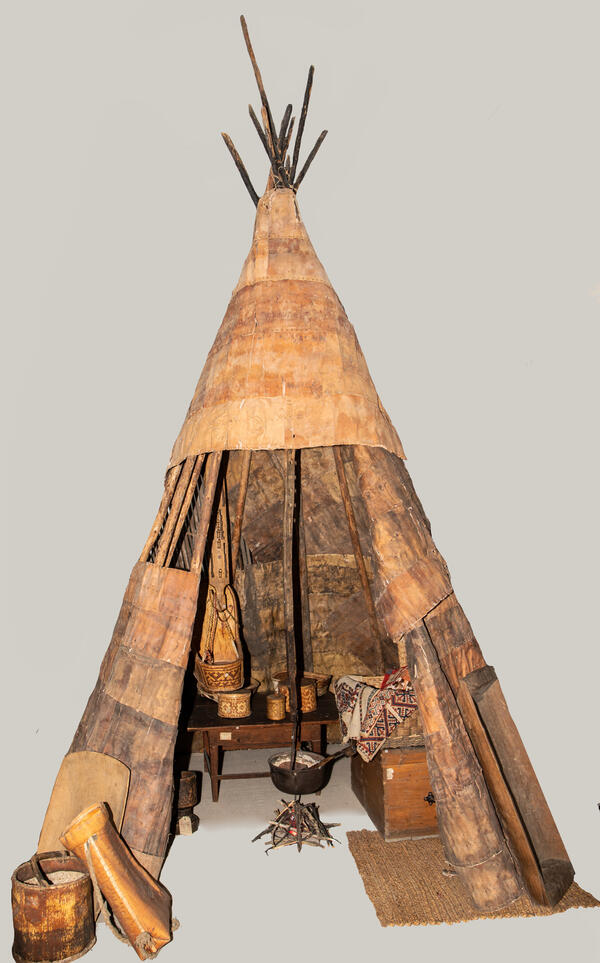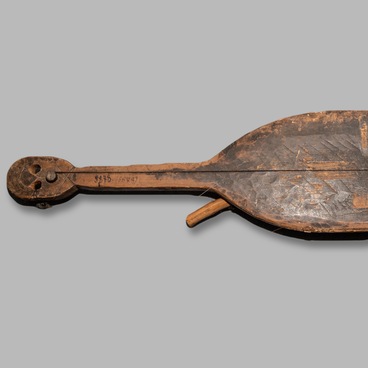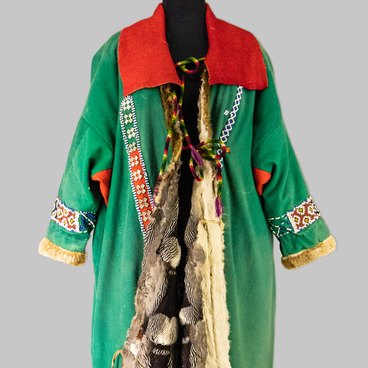The exhibition of the Tobolsk Provincial Museum has a model of the summer Khanty chum, i.e. a universal home for the nomadic peoples of the North engaged in reindeer husbandry. The size of the layout is about a quarter of the actual size of the real chum.
Reindeer herders had a certain procedure when installing the chum. First of all, they chose the right place. In winter, these were the places sheltered from the wind, while the windy areas were preferred in summer. Rich reindeer herders placed their chums away from others so as not to confuse the herds, while the poor gathered in camps in the summer. Installing the chum was a matter for women. They were helped by teenage girls.
First, they determined where the hearth would be. It was built exactly in the center of the dwelling, so that it warmed up evenly. The heat from the fire rose up and did not allow rain and snow to get inside the chum. The drops simply evaporated under the influence of high temperature. Floorboards were laid around the hearth. For this, usually, 6-8 wide four-meter boards were enough.
Then two main support poles were installed. The lower ends were stuck into the ground at an angle of 45 degrees, and the upper ends were tied with a flexible loop. The others were already placed around the circle. Summer chum was assembled from 25-56 strong spruce poles up to 7-8 meters long. The more poles there were and the longer they were, the more spacious the dwelling was. Then the central internal simza pole was installed and two horizontal poles were placed perpendicular to it, on which an iron rod with a hook for the boiler was placed.
On the resulting frame, a vise covering was thrown on top, stretched and secured with ropes. Coverings for the summer chum were sewn from strips of birch bark, which had been boiled before. Thus, the birch bark became elastic, strong, and did not dry out over time. The frame for the summer chum was made steeper than for the winter one so that water did not linger on the walls outside during the rains. The hem of the chum was covered with turf so that the edges of the covering would not swell from the draft.
After the dwelling was completely installed, the women covered it inside with mats made of grass, twigs, and soft deer skins, and hung a canopy made of light calico fabric to protect it from mosquitoes and midges. At the very base of the poles, it was customary to put deerskin parkas, an outerwear made of deer skins with fur inside, and other soft things. Reindeer herders carried and carry pillows, feather beds, and warm sleeping bags made of sheepskin with them. At night, the housewife spread out the bed, and during the day, they hid the sleeping accessories away from prying eyes.
Reindeer herders had a certain procedure when installing the chum. First of all, they chose the right place. In winter, these were the places sheltered from the wind, while the windy areas were preferred in summer. Rich reindeer herders placed their chums away from others so as not to confuse the herds, while the poor gathered in camps in the summer. Installing the chum was a matter for women. They were helped by teenage girls.
First, they determined where the hearth would be. It was built exactly in the center of the dwelling, so that it warmed up evenly. The heat from the fire rose up and did not allow rain and snow to get inside the chum. The drops simply evaporated under the influence of high temperature. Floorboards were laid around the hearth. For this, usually, 6-8 wide four-meter boards were enough.
Then two main support poles were installed. The lower ends were stuck into the ground at an angle of 45 degrees, and the upper ends were tied with a flexible loop. The others were already placed around the circle. Summer chum was assembled from 25-56 strong spruce poles up to 7-8 meters long. The more poles there were and the longer they were, the more spacious the dwelling was. Then the central internal simza pole was installed and two horizontal poles were placed perpendicular to it, on which an iron rod with a hook for the boiler was placed.
On the resulting frame, a vise covering was thrown on top, stretched and secured with ropes. Coverings for the summer chum were sewn from strips of birch bark, which had been boiled before. Thus, the birch bark became elastic, strong, and did not dry out over time. The frame for the summer chum was made steeper than for the winter one so that water did not linger on the walls outside during the rains. The hem of the chum was covered with turf so that the edges of the covering would not swell from the draft.
After the dwelling was completely installed, the women covered it inside with mats made of grass, twigs, and soft deer skins, and hung a canopy made of light calico fabric to protect it from mosquitoes and midges. At the very base of the poles, it was customary to put deerskin parkas, an outerwear made of deer skins with fur inside, and other soft things. Reindeer herders carried and carry pillows, feather beds, and warm sleeping bags made of sheepskin with them. At night, the housewife spread out the bed, and during the day, they hid the sleeping accessories away from prying eyes.



